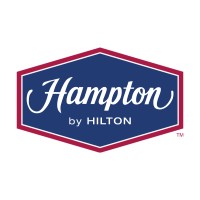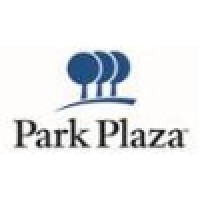
Deutsche Hospitality Company Cyber Security Posture
deutschehospitality.comDeutsche Hospitality stands for an exceptional portfolio comprising more than 130 hotels in 20 countries on three continents, about 30 hotels are currently under development. Deutsche Hospitality stands for an exceptional portfolio comprising more than 130 hotels in 20 countries on three continents, about 30 hotels are currently under development. The unique and varied Deutsche Hospitality portfolio includes Steigenberger Porsche Design Hotels, Steigenberger ICONs, Steigenberger Hotels & Resorts, MAXX by Deutsche Hospitality, our lifestyle option, Jaz in the City, the IntercityHotels at busy hubs such as railway stations and airports and the Zleep Hotels with quality and design at an affordable price.
Deutsche Hospitality Company Details
deutsche-hospitality
10,001+ employees
27531
721
Hospitality
deutschehospitality.com
Scan still pending
DEU_2915625
In-progress
Between 900 and 1000
This score is AI-generated and less favored by cyber insurers, who prefer the TPRM score.
 Deutsche Hospitality Global Score
Deutsche Hospitality Global Score.png)

Deutsche Hospitality Company Scoring based on AI Models
| Model Name | Date | Description | Current Score Difference | Score |
|---|---|---|---|---|
| AVERAGE-Industry | 03-12-2025 | This score represents the average cybersecurity rating of companies already scanned within the same industry. It provides a benchmark to compare an individual company's security posture against its industry peers. | N/A | Between 900 and 1000 |
Deutsche Hospitality Company Cyber Security News & History
| Entity | Type | Severity | Impact | Seen | Url ID | Details | View |
|---|
Deutsche Hospitality Company Subsidiaries

Deutsche Hospitality stands for an exceptional portfolio comprising more than 130 hotels in 20 countries on three continents, about 30 hotels are currently under development. Deutsche Hospitality stands for an exceptional portfolio comprising more than 130 hotels in 20 countries on three continents, about 30 hotels are currently under development. The unique and varied Deutsche Hospitality portfolio includes Steigenberger Porsche Design Hotels, Steigenberger ICONs, Steigenberger Hotels & Resorts, MAXX by Deutsche Hospitality, our lifestyle option, Jaz in the City, the IntercityHotels at busy hubs such as railway stations and airports and the Zleep Hotels with quality and design at an affordable price.
Access Data Using Our API

Get company history
.png)
Deutsche Hospitality Cyber Security News
Deutsche Hospitality to reopen hotels in Austria from 29 May 2020
Yes, we are open. As travel restrictions begin to ease and many countries gear up to celebrate the Whitsun holiday, the Steigenberger Hotel ...
Mews acquires HS3 Hotelsoftware to bolster German expansion
Building on its presence in Germany, cloud-based property management system provider Mews announced Tuesday the acquisition of HS3 ...
Deutsche Hospitality signs contract for first hotel in India
MBD Group, India's largest education and leading hospitality company and Deutsche Hospitality, the largest German chain of hotels and resorts, ...
Explainer: What the leak of German general's conference call from S'pore hotel says about risks of public Wi-Fi networks
SINGAPORE — Last week, a Russian media outlet leaked an audio recording of a confidential conversation between a group of senior German military ...
UK enforces new sanctions against Russia for cyber attack on German Parliament
The reckless cyber attacks by unit 26165 on Germany's Parliament in 2015 targeted information systems, stole significant amounts of data and ...
Steigenberger Hotel Am Kanzleramt now open for business
The German capital is about to acquire a new Steigenberger Hotel in the form of a First Class Hotel located in Berlin's rapidly growing ...
Steigenberger Hotel Group confers awards on Hotel Directors
Elisabeth Perwanger and Thomas Nixdorf have been named as the Steigenberger Hotel Group "General Managers of the Year".
Deutsche Hospitality opens the Steigenberger Hotel El Tahrir in Cairo - Now has 100 hotels in operation
Deutsche Hospitality is continuing on its path of expansion. The focus is both on tapping into new markets and on strengthening its brand ...

Deutsche Hospitality Similar Companies

Hampton
The Hampton brand, including Hampton Inn, Hampton Inn & Suites and Hampton by Hilton, is an award-winning leader in the upper-midscale hotel segment. With more than 2,700 properties in 32 countries globally, Hampton is part of Hilton Worldwide, the leading global hospitality company. All Hampton Hot

Ovations Food Services, LP
Ovations Food Services is now Spectra. Spectra is an industry leader in hosting and entertainment, partnering with clients to create memorable experiences for millions of visitors every year. Spectra’s unmatched blend of integrated services delivers incremental value for clients through several pri

Carlson Hotels "Park Plaza, Chandigarh
A full-service, upper midscale hotel brand for business and leisure travelers, Park Plaza® offers award-winning meeting facilities and staff who live the brand’s value proposition by going out of their way to show their appreciation to their guests. Park Plaza® hotels are located in city centers

Best Western Hotels & Resorts
Best Western Hotels & Resorts headquartered in Phoenix, Arizona, is a privately held hotel company within the BWH℠ Hotels global enterprise. With 19 brands and approximately 4,300 hotels in over 100 countries and territories worldwide*, BWH Hotels suits the needs of developers and guests in every ma

Fairmont Hotels & Resorts
Located in the heart of each destination we call home, a stay at any Fairmont hotel is truly unforgettable. Known for grand and awe-inspiring properties and thoughtful and engaging colleagues who aim to make each and every stay a cherished and memorable experience, we have been the stage for some of

Accor
We are Accor We are more than 290,000 hospitality experts placing people at the heart of what we do, creating emotion for our guests, and nurturing passion for service and achievement beyond limits. Building on the strength of our teams and of our fully integrated ecosystem of leading brands, perso

Frequently Asked Questions
Explore insights on cybersecurity incidents, risk posture, and Rankiteo's assessments.
Deutsche Hospitality CyberSecurity History Information
How many cyber incidents has Deutsche Hospitality faced?
Total Incidents: According to Rankiteo, Deutsche Hospitality has faced 0 incidents in the past.
What types of cybersecurity incidents have occurred at Deutsche Hospitality?
Incident Types: The types of cybersecurity incidents that have occurred include .
Incident Details
What are the most common types of attacks the company has faced?
Additional Questions
What Do We Measure?
















Every week, Rankiteo analyzes billions of signals to give organizations a sharper, faster view of emerging risks. With deeper, more actionable intelligence at their fingertips, security teams can outpace threat actors, respond instantly to Zero-Day attacks, and dramatically shrink their risk exposure window.
These are some of the factors we use to calculate the overall score:
Identify exposed access points, detect misconfigured SSL certificates, and uncover vulnerabilities across the network infrastructure.
Gain visibility into the software components used within an organization to detect vulnerabilities, manage risk, and ensure supply chain security.
Monitor and manage all IT assets and their configurations to ensure accurate, real-time visibility across the company's technology environment.
Leverage real-time insights on active threats, malware campaigns, and emerging vulnerabilities to proactively defend against evolving cyberattacks.




